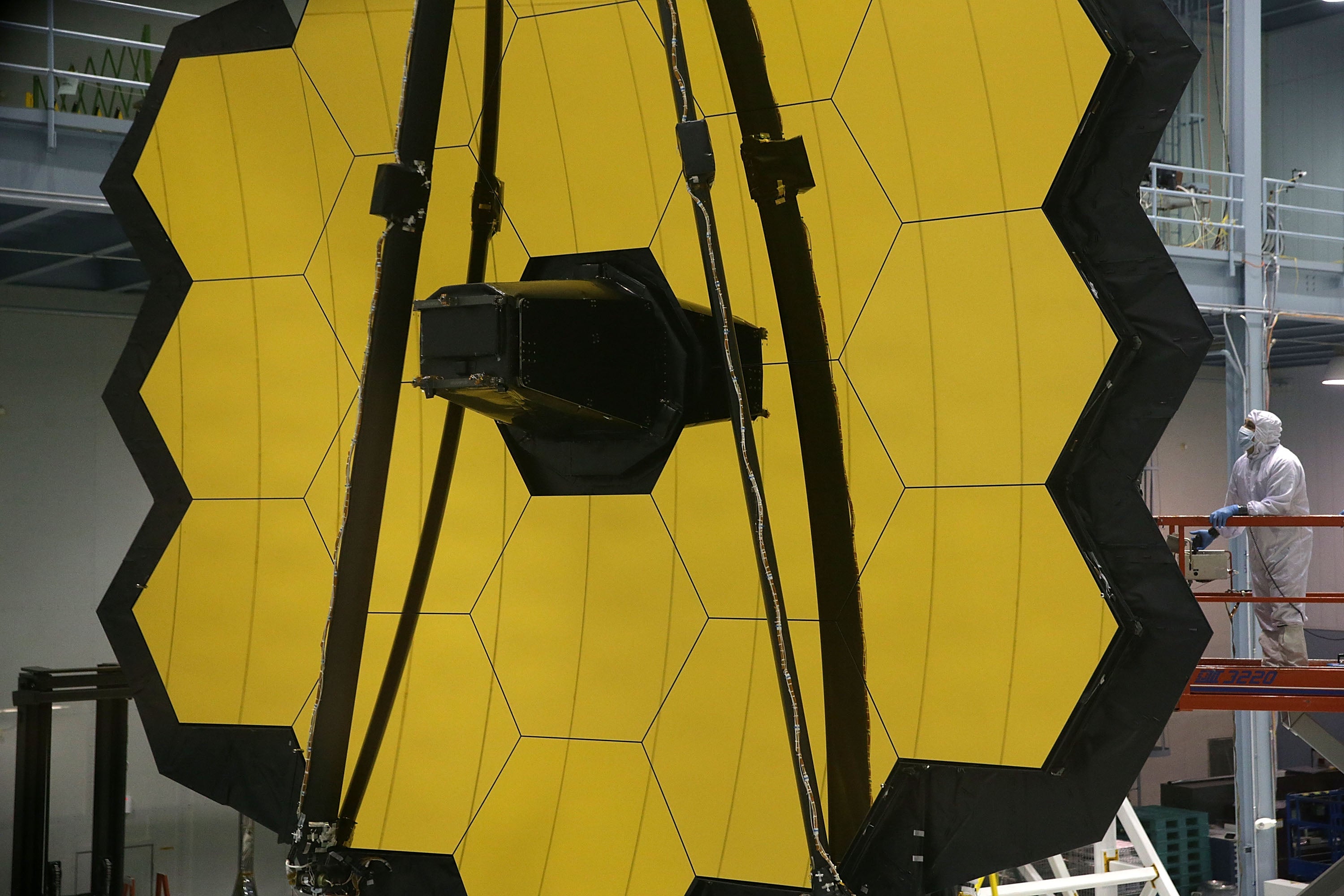Nasa’s James Webb Space Telescope begins unprecedented task of aligning itself
The telescope has to align its 18-segment mirror so that it can capture its first photos

Your support helps us to tell the story
From reproductive rights to climate change to Big Tech, The Independent is on the ground when the story is developing. Whether it's investigating the financials of Elon Musk's pro-Trump PAC or producing our latest documentary, 'The A Word', which shines a light on the American women fighting for reproductive rights, we know how important it is to parse out the facts from the messaging.
At such a critical moment in US history, we need reporters on the ground. Your donation allows us to keep sending journalists to speak to both sides of the story.
The Independent is trusted by Americans across the entire political spectrum. And unlike many other quality news outlets, we choose not to lock Americans out of our reporting and analysis with paywalls. We believe quality journalism should be available to everyone, paid for by those who can afford it.
Your support makes all the difference.Nasa has begun the process of focusing the James Webb Space Telescope so that it may capture images of stars and galaxies shortly after the Big Bang.
The $10 billion telescope has to unfold its huge 6.5-metre, 18-segment mirror, made of gold-plated beryllium metal, over a series of months. This is a much larger light-collecting surface than that found on the 30-year-old Hubble Space Telescope, the precursor to Webb.
Those segments must now be detached from fasteners that held them in place for the launch and then moved forward half an inch from their original configuration - a 10-day process - before they can be aligned to form a single, unbroken, light-collecting surface.
The alignment will take an additional three months, Lee Feinberg, the Webb optical telescope element manager at Goddard, told Reuters by telephone.
Aligning the primary mirror segments to form one large mirror means each segment "is aligned to one-five-thousandth the thickness of a human hair", Feinberg said.
"All of this required us to invent things that had never been done before," such as the actuators, which were built to move incrementally at -400 Fahrenheit (-240 Celsius) in the vacuum of space, he added.
The telescope’s smaller, secondary mirror, designed to direct light collected from the primary lens into Webb’s camera and other instruments, must also be aligned to operate as part of a cohesive optical system.
If all goes as planned, the telescope should be ready to capture its first science images in May, which would be processed over about another month before they can be released to the public, Feinberg said.
The telescope will mainly view the cosmos in the infrared spectrum, allowing it to gaze through clouds of gas and dust where stars are being born. Hubble has operated primarily at optical and ultraviolet wavelengths.
Webb is about 100 times more powerful than Hubble, enabling it to observe objects at greater distances, thus farther back in time, than Hubble or any other telescope.
Astronomers say this will bring into view a glimpse of the cosmos never previously seen - dating to just 100 million years after the Big Bang, the theoretical flashpoint that set in motion the expansion of the observable universe an estimated 13.8 billion years ago.
Webb will eventually reach orbit around the Sun – an optimum place to collect solar energy – and full alignment is expected to be reached on 24 April, approximately four months after its launch on Christmas Day 2021. One month later, we should expect to see its first photos.
The efficiency of the Webb launch also means the telescope is expected to run for 20 years, rather than the decade Nasa predicted, giving scientists a longer time to study the origins of our universe.
Additional reporting by Reuters
Join our commenting forum
Join thought-provoking conversations, follow other Independent readers and see their replies
0Comments